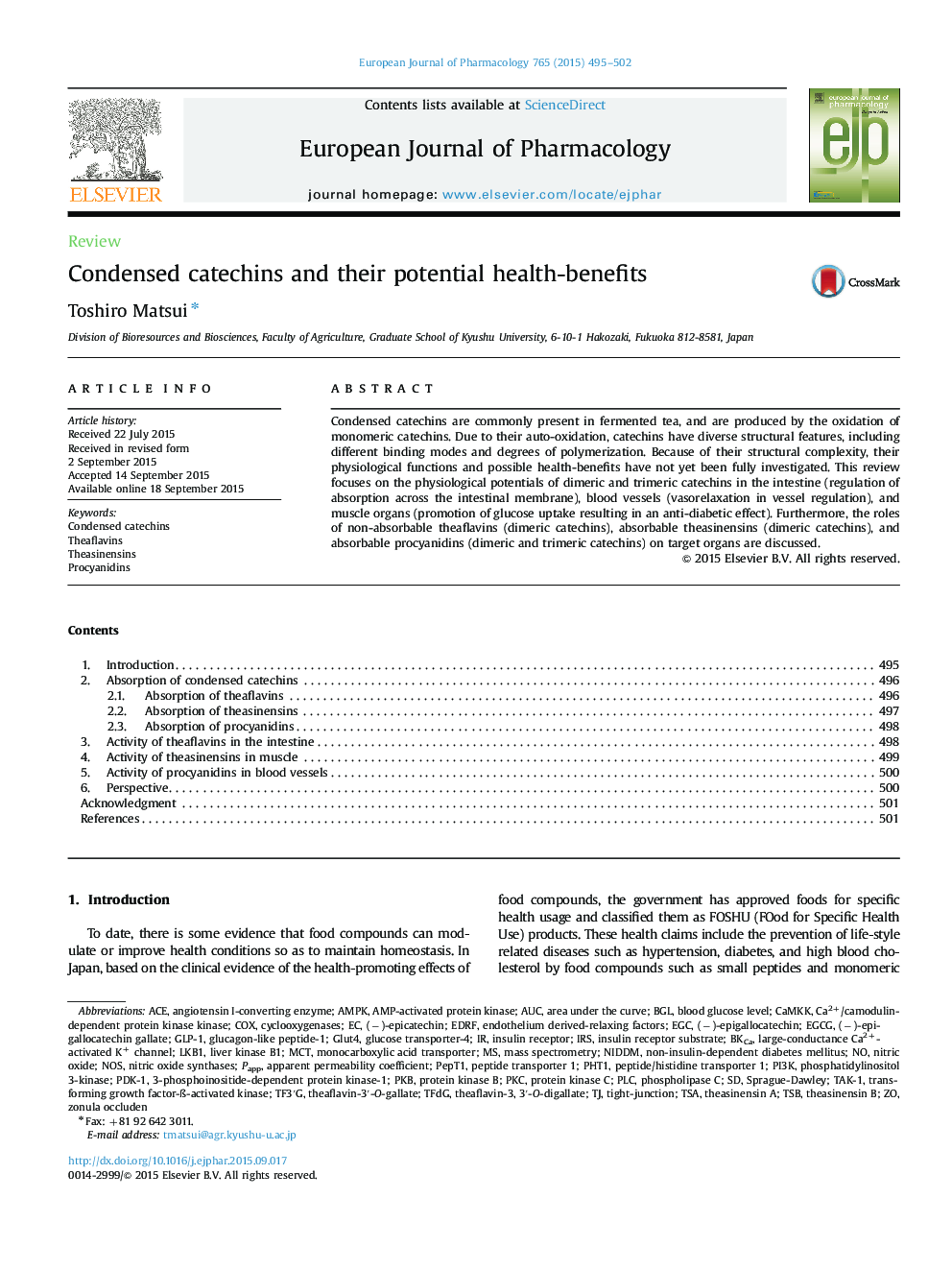| Article ID | Journal | Published Year | Pages | File Type |
|---|---|---|---|---|
| 5826855 | European Journal of Pharmacology | 2015 | 8 Pages |
Abstract
Condensed catechins are commonly present in fermented tea, and are produced by the oxidation of monomeric catechins. Due to their auto-oxidation, catechins have diverse structural features, including different binding modes and degrees of polymerization. Because of their structural complexity, their physiological functions and possible health-benefits have not yet been fully investigated. This review focuses on the physiological potentials of dimeric and trimeric catechins in the intestine (regulation of absorption across the intestinal membrane), blood vessels (vasorelaxation in vessel regulation), and muscle organs (promotion of glucose uptake resulting in an anti-diabetic effect). Furthermore, the roles of non-absorbable theaflavins (dimeric catechins), absorbable theasinensins (dimeric catechins), and absorbable procyanidins (dimeric and trimeric catechins) on target organs are discussed.
Keywords
large-conductance Ca2+-activated K+ channelGLP-1PKCPLCPKBIRSMCTGLUT4TSBCaMKKEGCNIDDMNOSACEAMPKBGLTSAPDK-1EGCGCOXEDRFPHT1PI3KTight-junctionLKB1TAK-1(−)-epicatechin(−)-epigallocatechin(−)-epigallocatechin gallateAMP-activated protein kinaseAUCBKCaangiotensin I-converting enzymeSprague-Dawleyinsulin receptor substrateTheaflavinsmonocarboxylic acid transporternon-insulin-dependent diabetes mellitusblood glucose levelNitric oxide synthasesCyclooxygenasesapparent permeability coefficientMass spectrometryPhosphatidylinositol 3-kinasephospholipase Carea under the curveNitric oxide3-phosphoinositide-dependent protein kinase-1peptide transporter 1Pappprotein kinase BProtein kinase CProcyanidinsPept1glucagon-like peptide-1liver kinase B1glucose transporter-4insulin receptor
Related Topics
Life Sciences
Neuroscience
Cellular and Molecular Neuroscience
Authors
Toshiro Matsui,
